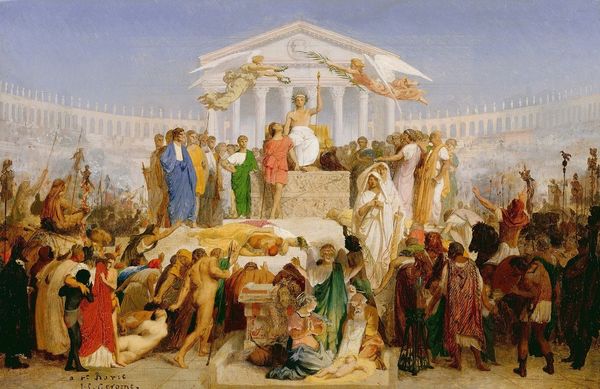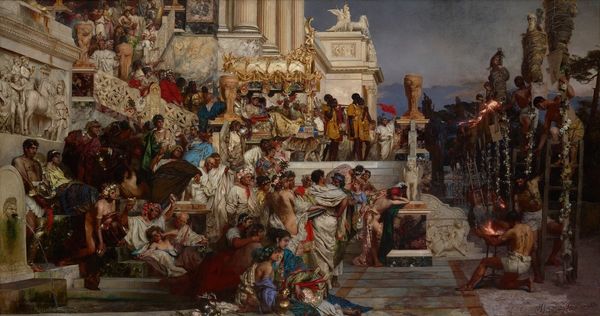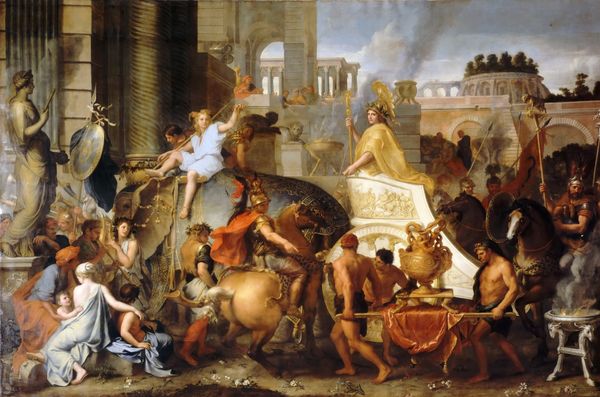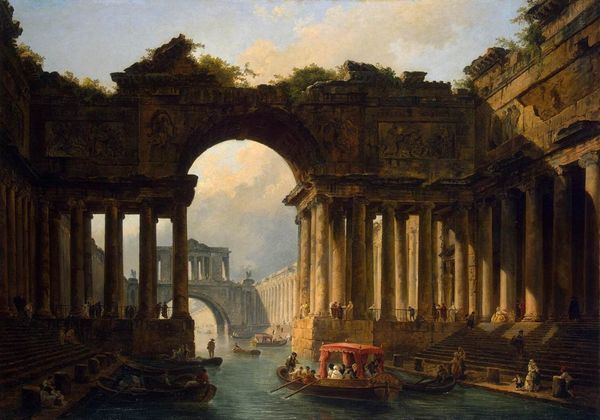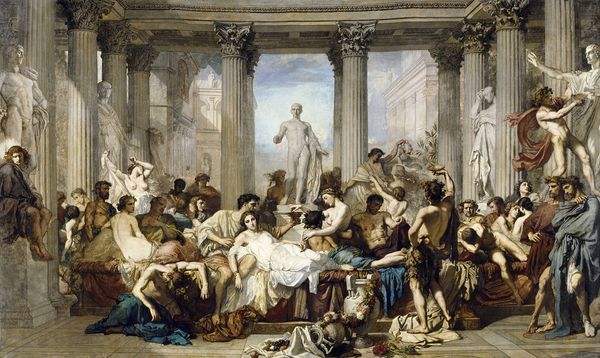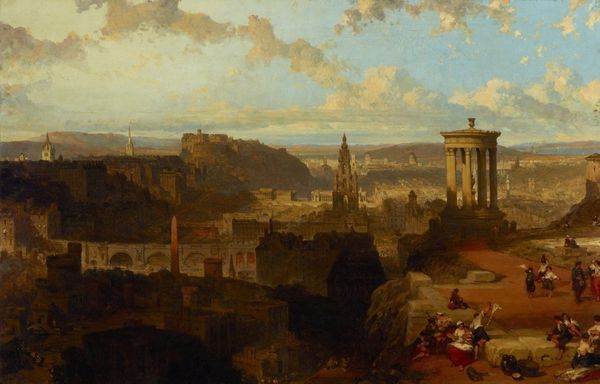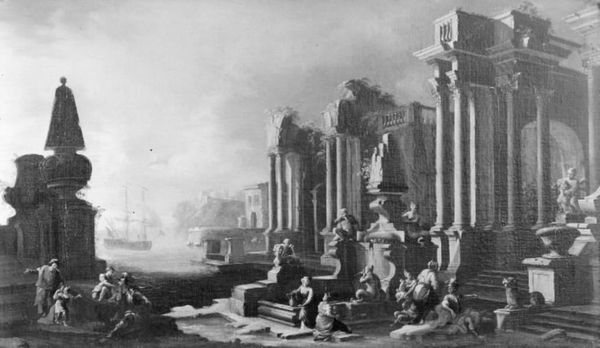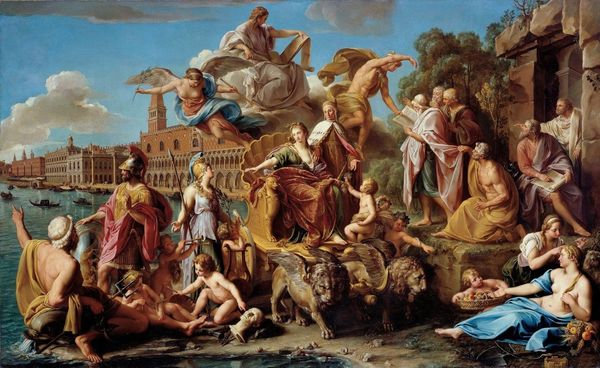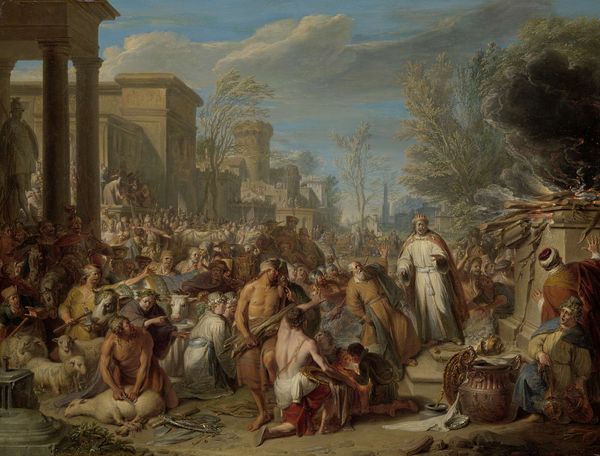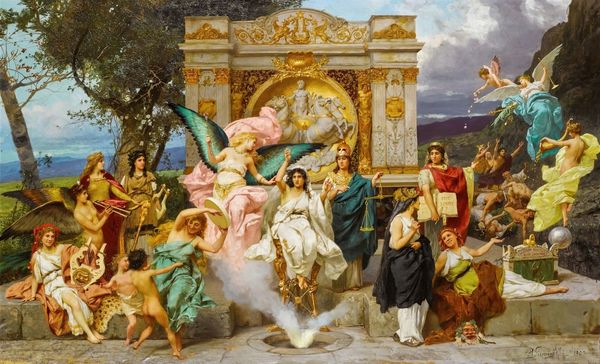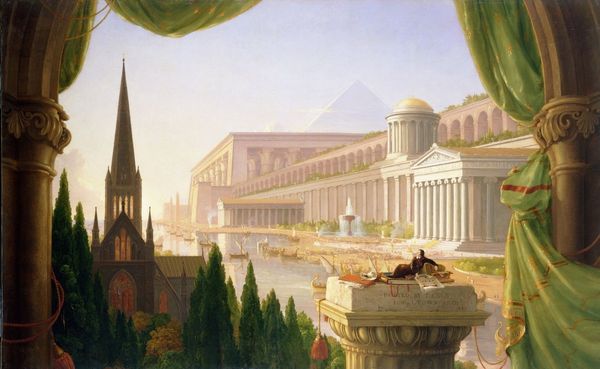
painting, oil-paint, architecture
#
neoclacissism
#
allegory
#
painting
#
oil-paint
#
landscape
#
holy-places
#
perspective
#
oil painting
#
romanticism
#
cityscape
#
history-painting
#
architecture
Dimensions: 193 x 130.1 cm
Copyright: Public domain
Curator: Thomas Cole's *The Course of Empire: The Consummation of Empire*, painted in 1836, part of a larger allegorical series, showcases an idealized vision of a flourishing city at its peak. Editor: The initial impact is overwhelming—it's a riot of neoclassical architecture, figures teeming across every surface, all bathed in an almost unreal golden light. It feels intentionally grandiose, doesn’t it? Curator: Indeed. Cole meticulously composes the scene to convey prosperity and power. The architectural details are deliberate references to classical civilizations, suggesting the apex of human achievement, a cultural memory of past glory, you could say. Editor: Structurally, the painting is fascinating. The eye is immediately drawn into the heart of the composition, the bustling harbor framed by symmetrical buildings. Then, that overwhelming sense of movement everywhere leads the eye to dance about, always returning to that initial focal point. But there's an underlying tension, almost a sense of unease amidst all the pageantry. Do you see that too? Curator: I think that’s quite perceptive. There is a tension present. Knowing Cole's wider intentions, we recognize the empire is at its most glorious, yes, but that this point is also right before the inevitable descent. There's a sense of hubris embedded here, a cautionary tale about unchecked ambition encoded in visual form. Look closer at the figures, their postures and actions: many carry implications of luxury, indulgence, and a turn away from a simple civic-mindedness. Editor: The color palette reinforces that reading. The warm, vibrant hues lend it all an undeniable allure, yet there's also something a bit sickly about the abundance of gold, a kind of visual excess. Is it just me, or is the material rendering almost too perfect, too polished? Curator: Cole, being rooted in the Romantic era, certainly leans into idealized aesthetics. And your observation regarding surface and detail makes sense given his interest in landscape painting. However, he integrates moralistic messaging within that presentation—not simply capturing natural beauty, but encoding narrative about humanity and our cycles of civilization. Editor: Well, that certainly shifted my perspective! It's remarkable how formal elements contribute to deeper meaning. Seeing this piece, in light of a meditation of human cycles of civil progress makes it particularly resonate in our current times. Curator: Agreed. Thinking about how Cole explores empire building gives rise to questions around cycles of time, and human endeavors makes viewing "The Consummation of Empire" so intriguing still.
Comments
No comments
Be the first to comment and join the conversation on the ultimate creative platform.

